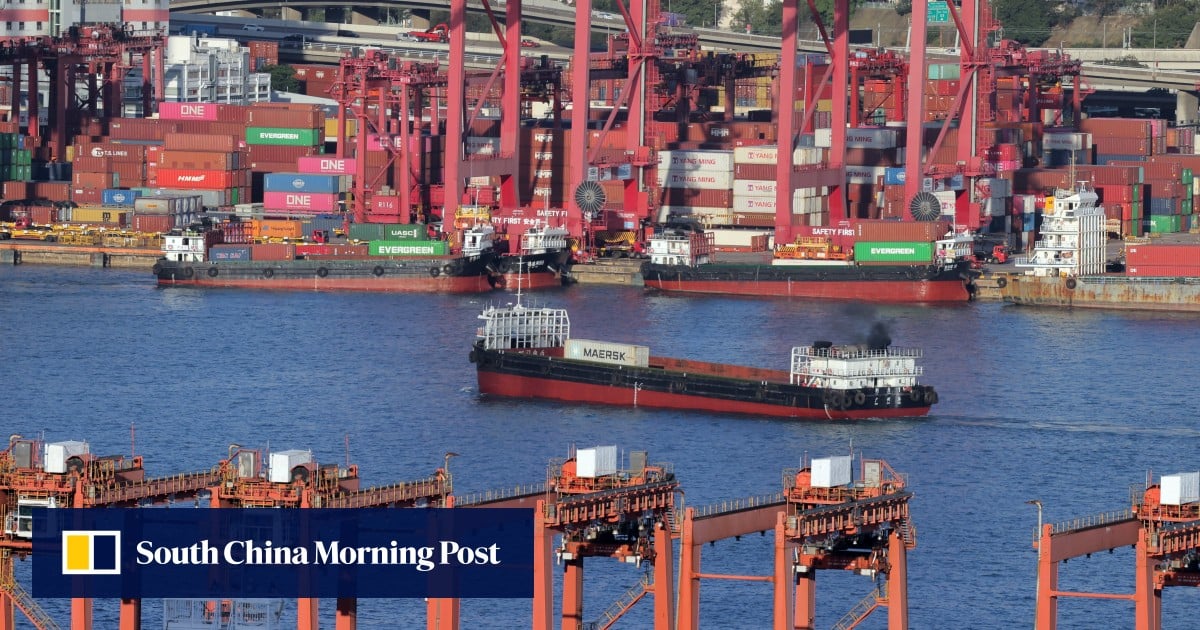Logistics property in the bay area “bucked the headwinds” of a surge in new supply, said Silvia Zeng, head of research for south China at JLL. Southern China recorded a single-digit vacancy rate, versus double-digit rates in the other cities, she added.
Overall net absorption in China soared 44 per cent year on year in 2023 to 7.22 million sq m, the second highest level after a peak in 2021, even though the vacancy rate rose 21.8 per cent amid an unprecedented influx of 12 million sq m of new supply, according to international property consultancy CBRE.
Partly thanks to the strong demand from e-commerce firms, logistics warehouses are one of most prized assets in the commercial real estate category for institutional investors including GLP China Holdings, ESR Group, and Warburg Pincus. The space is also viewed as a low-risk option even if there are market headwinds.
Last month, ESR Group, one of the largest real estate asset managers globally, bought a 126,000 sq m plot in Zengcheng district of Guangzhou to develop a supply-chain centre.
“[Cross-border e-commerce platforms] are making use of the advantages of the Greater Bay Area’s ‘all in one’ chain – from production, to purchases, and to export – in their global expansion,” Zeng said.
“You can see all of them choosing the Greater Bay Area as their key [cross-border] network in China … It is inseparably linked to the unique strategies and the model of ‘small batch, short cycle’ in our ‘world factory’.”
The world factory concept refers to the manufacturing cluster in the bay area, where more than 50,000 manufacturers exist in proximity to Hong Kong’s free port, which allows them to enjoy both fast transport and attractive labour costs.
In turn, the volume of orders from those companies digests almost all of the new warehouse space in the area as soon as it is launched, Zeng said.
Temu, Shein, AliExpress and TikTok Shop experienced the fastest growth in five years in 2023 in terms of gross merchandise value, which rose by at least US$10 billion for each company, according to data compiled by CBRE.
The cross-border e-commerce firms also leased almost 3.5 million sq m of new logistics space in 2023, a fivefold increase from 2022, CBRE said. Some 1.5 million sq m of warehouses have been pre-leased by them so far this year, it added.
“The demand in Foshan and Guangzhou is getting more active,” said Waylon Deng, head of advisory and transaction services, industrial and logistics, at CBRE Southern China. For example, he cited a 137,000 sq m warehouse in Guangzhou leased by an e-commerce giant in the first quarter. He did not disclose the name of the company, but Chinese media reports indicate that it was Temu.
Four out of five projects in development in Foshan have been pre-leased, Deng added.
The voracious appetite for space arises from the so-called wholly entrusted or full-management model, pioneered by Temu and widely adopted by other firms, in which the platform company handles pricing, warehousing, logistics, sales and returns. The model requires high-quality warehouses with ample space to handle not only storage but also packaging and distribution of parcels, according to CBRE.
Meanwhile, a “semi-management” model, which allows experienced merchants with their own warehouses or the ability to deliver goods themselves to take charge of operations and after-sales logistics, also boosts demand for warehouse space from such sellers, the agency said.
For instance, AliExpress and Cainiao logistics, both subsidiaries under Alibaba Group, saw their stock volume increase by 600 per cent year on year in January when they launched the model, it added.
Looking ahead, 2024 will see “a shift” towards an era of demand-supply balance in the country’s logistics warehouse market, CBRE analysts led by Sam Xie said in a report. The consultancy forecasts that net absorption of logistics warehouses will be about 7.5 million sq m in 2024, driving overall vacancy back down to 20 per cent in China.


